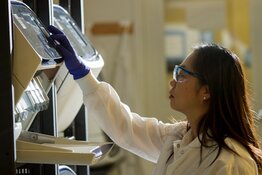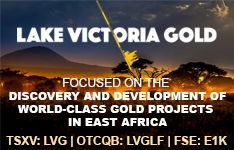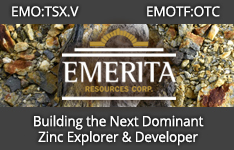The Life Sciences Report: You are the president and CEO of Centre for Commercialization of Regenerative Medicine (CCRM), a Canadian not-for-profit organization supporting development of technologies that will hopefully hasten the journey of stem cell and related therapeutics through regulatory pathways and to the market. How does it work?
Michael May: CCRM was founded through a unique government program called the Networks of Centres of Excellence. It was built around the concept of creating the right kind of ecosystem and network to drive commercialization. The government of Canada invests in three types of networks: academic; commercialization, which is where CCRM fits in; and what is called business-led networks—consortia of established companies that work together in an open innovation model.
"RepliCel Life Sciences Inc. has a diversified portfolio of technologies, is very focused and is growing rapidly."
CCRM actually followed on an academic network that was around for 14 years. That network had built a very strong culture of collaboration among the stem cell and regenerative medicine scientists in Canada, and prepared them to commercialize their technologies. CCRM was established to integrate elements over and above the discovery phase—access to industry, company creation and access to investors. And now CCRM has built an industry consortium of more than 40 companies from around the world. You could almost envision CCRM spinning off a business-led network one day to take full advantage of the government's strategy for building the right kind of ecosystem for commercialization.
TLSR: Does CCRM recruit innovators to Canada?
MM: Our model is to build a global network and to be a not-for-profit, neutral, safe place to bring together the right resources, elements and leaders, including innovators, to drive technologies forward. We, of course, need to look at a benefit for Canada, but we don't see a benefit to Canada as being mutually exclusive from the benefit to any investor or innovator or stakeholder around the world.
TLSR: How does CCRM differ from other industry advocacy organizations—for instance, from the Alliance for Regenerative Medicine (ARM), which was formed in the U.S. in 2009. I recently spoke with ARM Chairman Edward Lanphier about ARM. Are you familiar with that organization?
MM: Indeed I am. I'm on the executive committee for ARM.
CCRM is not just an advocacy group. It's actually built around tangible facilities and infrastructure that can drive not only technology development for out-licensing to our industry partners, but can also enable company creation in a very different way than has been done here in the past.
"If we can get companies over early hurdles with unique resources, we can demonstrate accelerated commercialization."
We have a tie-in to a network of academics and in-house facilities that develop technologies the way a startup company would. With our founding academic network of Canadian institutions and scientists, we have access to global innovators. We have been able to negotiate access to their intellectual property (IP). When we find IP, and after doing due diligence on it and bundling it with other IP, we can bring that technology into our own facility, where we have a staff of 35 people, including about 20 scientists, who can conduct wet diligence and product development. We fill a gap—we are doing work that academics typically don't like to do or don't always do very well. By bringing together all these capabilities, along with some specialized platforms, like cellular reprogramming, gene editing, cell manufacturing and biomaterial synthesis, we can complement what a standard academic network would bring to the table.
We are also driven by a government mandate to be sustainable, so when we invest in promising technologies or bundles of technologies, we expect to take some equity, or some position, in those opportunities. That way, over time, we can grow and sustain an industry around our network.
TLSR: Regenerative medicine appears to have been left behind in terms of development, compared to other biotechnologies. Why do you think these powerful breakthrough technologies have languished on the lab bench?
MM: The bottom line is that regenerative medicine is complicated. It's an expensive process to take on from start to finish.
Our model at CCRM is built around a couple of assumptions. One is that you have to do more with less these days, and so you need capital efficiency, especially at the very early stages, where investors really have abandoned projects. Although today they say there's a lot of investment in early-stage development, that typically means venture capitalists providing follow-on investment to their current companies. New startups are still having trouble getting financed. Regenerative medicine is also a new industry, so I think this "left-behind" feeling is symptomatic of that fact.
TLSR: You just used an important term: capital efficiency. How do you get around, or solve, this problem of doing more with less?
MM: I think it can be solved through collaborative vehicles. CCRM started with an academic network that was building collaboration and getting access to IP. We then leveraged the reputation of our academic network to attract industry. Then, of course, industry brought its ever-important validation and marketing savvy to the table, which represents expertise that is largely absent in the academic environment.
"Canada is very clear about its willingness to be both a cost-and time-effective regulator of these new therapies."
After three years of operation, with significant deal flow and two networks in place, CCRM is now at a stage where it's building the third key element of its model: an investor network. The system was primed with a very modest amount of money, but now we want to fuel our model with risk capital. Global networks, access to deal flow, sufficient funding and coordination of specialized infrastructure/expertise are all key elements of CCRM’s model for filling the gap between discovery and the market.
Investors are looking for good investments. If we can get companies over some of the early hurdles with unique resources, I think we will demonstrate accelerated commercialization.
TLSR: Michael, is it hard to get investors to invest in science projects? They really need to see the path to commercialization, don't they?
MM: Absolutely. Financiers don't like to take scientific risks. They are more comfortable with commercial risk. Despite what people think, scientists are also risk takers, but they don't like to take financial risk. The role of an entrepreneur is to sit in the middle and manage everyone's comfort or discomfort with different risks. That's an important role for an organization like CCRM and the entrepreneurs that it brings to bear.
TLSR: You have said that Japan and Canada would lead the way in regenerative medicine. Does that imply that the U.S. has lagged?
MM: I would never discount the ability of the U.S. to muster resources and drive innovation in any field. There are strengths in regenerative medicine across the U.S., but regenerative medicine has a unique status in Canada. Stem cells were actually discovered in Canada prior to the bone marrow transplants of the 1960s. Of course, Japan's Shinya Yamanaka received the 2012 Nobel Prize in Physiology or Medicine for discovering that mature cells could be reprogrammed to become "pluripotent." There is a nationalistic element to regenerative medicine in both Canada and Japan. That's one difference.
Japan has taken it one step further. It has taken a novel approach in its regulatory policy by acknowledging that cell-based products may require a different regulatory pathway than drugs or devices. In November 2013, the Japanese Diet (parliament) approved new legislation, the Regenerative Medicine Law, to provide for conditional approvals of cell-based products that demonstrate very strong safety data. These products can go to the market and be sold. Once enough patients have been treated to demonstrate proof of efficacy, then they get full approval. This is a very different model. In fact, if you think about it, if a company can sell its product after Phase 2 development with proof of safety, it changes the return on investment (ROI) model entirely for early-stage programs.
"I would never discount the ability of the U.S. to muster resources and drive innovation."
Canada has been the first to approve regenerative medicine products. It was the first country to approve the early skin substitutes from Organogenesis (private) and Advanced Tissue Sciences (Chapter 11 liquidation under bankruptcy in March 2009). Canada was also the first to approve Osiris Therapeutics Inc.'s (OSIR:NASDAQ) (OSIR:NASDAQ) Prochymal (remestemcel-L). Where Canada needs to be innovative now is with reimbursement. None of those products has been reimbursed in Canada.
TLSR: Is CCRM working with regulators on reimbursement?
MM: Yes, it's one of the areas of focus for CCRM. Who is going to pay for a therapy is typically the last question people ask in the development process. We are working with government agencies in Canada so that the reimbursement issue gets addressed early in development. That would put Japan and Canada at the leading edge of innovation in the commercialization of these products.
TLSR: You have referenced Japan's new regulatory legislation. Does Canada propose to do anything like that, so that companies could effectively get a drug on the market with strong Phase 2 safety data?
MM: Canada is not proposing legislation like that—at least that I'm aware of. What the Canadian regulatory authority, Health Canada, has demonstrated in the past is that it will approve cell-based products on a conditional basis, just like Japan. Health Canada is focusing more on risk/benefit, and is therefore flexible. It has also demonstrated that it will approve cell-based products much faster than other jurisdictions. So although Canada doesn't appear to be going down the same regulatory route as Japan in creating a formal Phase 2 approval policy, it is being very clear about its willingness to be open-minded and to be both a cost-and time-effective regulator of these new therapies.
TLSR: Risk/benefit implies efficacy, not just safety.
MM: It does. It also implies that if patients have no other option, then having an experimental therapy available quickly fits into the risk/benefit equation. That's part of the flexibility embedded in the Canadian system. About six months ago Health Canada produced a guidance document for cell-based clinical trials to try to provide not only flexibility in its regulation but also some clarity on what it's expecting in terms of clinical data.
TLSR: Tell me about some of the interesting companies developing regenerative medicine technologies in Canada?
MM: One of our leading company creations (private) concerns the expansion of hematopoietic stem cells from cord blood. Getting the levels of stem cells to treat leukemias in adults, versus children, has been a clinical development goal for some time. We have brought together a couple of technologies from different institutions, along with some bioreactor technology from one of our industry consortium partners, to deliver best-in-class hematopoietic stem cell expansion, gene therapy and potentially the ability to produce mature blood products.
"There is a nationalistic element to regenerative medicine in both Canada and Japan."
Another area where Canadian researchers have been leading is in cancer stem cells and the thesis that cancer is actually driven by a stem cell that's gone awry. If you can find and target that cancer stem cell, you can target the cancer. One of the companies that CCRM has funded in the past year is Actium Research (private), which is raising money now. Its technology is based on the work of Dr. Mick Bhatia, a senior scientist at McMaster University in Hamilton, Ontario. Actium has created a unique platform to screen molecules that will attack cancer stem cells as opposed to normal stem cells.
TLSR: Is Actium's technology about identifying cell membrane antigens that might be exclusive to a cancer stem cell?
MM: That could be part of it. The company is identifying ways to attack a cancer stem cell versus a normal cell. For instance, if you can push a stem cell to differentiate, you can kill it with standard treatments. Because a stem cell is in a pluripotent state, it's more resistant to drug therapy. There are a number of different mechanisms there, but Actium is a good example of a very young Canadian company that is focused on the country's strength in stem cell research.
TLSR: What about another name? Do you have a public name or two that investors could access?
MM: Yes. RepliCel Life Sciences Inc. (RP:TSX.V; REPCF:OTCQB) is focused on cell therapy for orthopedic and hair restoration applications. It too is a Canadian company, and it has been aggressively developing ties to Japan, in association with its partnership with Shiseido Company Ltd. (4911:TSE), around transplanting cells for hair growth. The company has a diversified portfolio of technologies, is very focused and is growing rapidly as a public company.
TLSR: Many cell therapy companies have not participated in this tremendous biotech bull market of the past few years. RepliCel's stock has done quite well over the past 12 weeks, while most cell therapy companies have not. Do you have a thought on why that might be?
MM: I think, in part, that comes down to the leadership of the company and its understanding of what it takes to not only advance a technology, but to also tell its story. RepliCel has made some key hires in the last year to augment and strengthen its offering. The company has experienced management, and we all know that's a key piece of the puzzle in moving these companies forward.
TLSR: Is there another public company you might mention?
MM: Canadian company Sernova Corp. (SVA:TSX.V) is an interesting name. It has developed a unique vascularized pouch for cells, and it is working in the same area as San Diego-based ViaCyte Inc. (private) in the U.S., which has been funded by the California Institute for Regenerative Medicine. Sernova is working with Dr. James Shapiro, at the University of Alberta in Edmonton, around transplanting islets, or islet-like cells, to treat diabetes. Sernova is focused on the device to transplant those cells.
TLSR: Thanks for your insights, Michael.
 Michael May is president and chief executive officer of the Centre for the Commercialization of Regenerative Medicine (CCRM). Prior to CCRM, he was president, chief operating officer and cofounder of Rimon Therapeutics Ltd., a Toronto-based regenerative medicine company developing novel medical polymers that possess druglike activity. May completed his Ph.D. in chemical engineering at the University of Toronto in 1998 as a NSERC (Natural Sciences and Engineering Research Council of Canada) Scholar, and was awarded the Martin Walmsley Fellowship for Technological Entrepreneurship. May sits on a number of boards and advisory committees, including MaRS Innovation, the Alliance for Regenerative Medicine, 20/20 Vision and the Department of Chemical Engineering and Applied Chemistry at the University of Toronto.
Michael May is president and chief executive officer of the Centre for the Commercialization of Regenerative Medicine (CCRM). Prior to CCRM, he was president, chief operating officer and cofounder of Rimon Therapeutics Ltd., a Toronto-based regenerative medicine company developing novel medical polymers that possess druglike activity. May completed his Ph.D. in chemical engineering at the University of Toronto in 1998 as a NSERC (Natural Sciences and Engineering Research Council of Canada) Scholar, and was awarded the Martin Walmsley Fellowship for Technological Entrepreneurship. May sits on a number of boards and advisory committees, including MaRS Innovation, the Alliance for Regenerative Medicine, 20/20 Vision and the Department of Chemical Engineering and Applied Chemistry at the University of Toronto.
Read what other experts are saying about:
Want to read more Life Sciences Report interviews like this? Sign up for our free e-newsletter, and you'll learn when new articles have been published. To see recent interviews with industry analysts and commentators, visit our Streetwise Interviews page.
DISCLOSURE:
1) George S. Mack conducted this interview for Streetwise Reports LLC, publisher of The Gold Report, The Energy Report, The Life Sciences Report and The Mining Report, and he provides services to Streetwise Reports as an independent contractor. He owns, or his family owns, shares of the following companies mentioned in this interview: None.
2) The following companies mentioned in the interview are sponsors of Streetwise Reports: RepliCel Life Sciences Inc. The companies mentioned in this interview were not involved in any aspect of the interview preparation or post-interview editing so the expert could speak independently about the sector. Streetwise Reports does not accept stock in exchange for its services.
3) Michael May: I own, or my family owns, shares of the following companies mentioned in this interview: None. I personally am, or my family is, paid by the following companies mentioned in this interview: None. Senova Corp. and RepliCel Life Sciences Inc. are fee-paying members of CCRM industry consortium. CCRM is a shareholder of Actium Research. I was not paid by Streetwise Reports for participating in this interview. Comments and opinions expressed are my own comments and opinions. I determined and had final say over which companies would be included in the interview based on my research, understanding of the sector and interview theme. I had the opportunity to review the interview for accuracy as of the date of the interview and am responsible for the content of the interview.
4) Interviews are edited for clarity. Streetwise Reports does not make editorial comments or change experts' statements without their consent.
5) The interview does not constitute investment advice. Each reader is encouraged to consult with his or her individual financial professional and any action a reader takes as a result of information presented here is his or her own responsibility. By opening this page, each reader accepts and agrees to Streetwise Reports' terms of use and full legal disclaimer.
6) From time to time, Streetwise Reports LLC and its directors, officers, employees or members of their families, as well as persons interviewed for articles and interviews on the site, may have a long or short position in securities mentioned. Directors, officers, employees or members of their families are prohibited from making purchases and/or sales of those securities in the open market or otherwise during the up-to-four-week interval from the time of the interview until after it publishes.










































